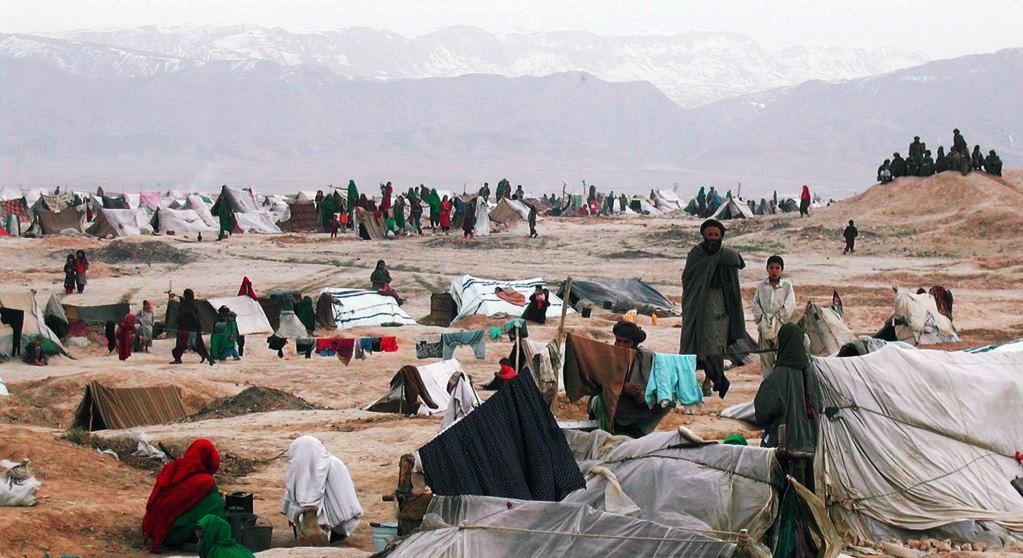A review of the Afghan refugees’ situation in 2017
Last week, head of UN women Rebecca Tavares said to a meeting in the presidential palace that Afghanistan was the second country in the world that war has forced its citizens to displace and that she was concerned about the situation of the internally displaced people in this country. [1]
On the other hand, between January and August 2017, three hundred thousand unregistered refugees have returned to the country from Pakistan and Iran.
What is the statistics of the internally displaced people (IDP) in the country? What is the statistics of the refugees in the neighboring countries and what is their status? What is the condition of the Afghan refugees in Europe? Here you would read about these and other similar questions.
Internally displaced people in the country
War, economic and natural disasters in various stages have either displaced Afghans internally or forced them to move to other countries.
During the Soviet invasion of Afghanistan, people were pushed out of their homes to the neighboring countries or from different regions of the country into the capital city of Afghanistan. There are no exact statistics about the number of refugees or IDPs of the time at hand. However, according to the two Afghanologists “Nancy” and Louis Dupree” before the Saur Revolution, the population of Kabul was approximately 750 thousand people, but after the Soviet invasion, some Afghans migrated to Kabul to escape the horrors of war, doubling the population of this city (around 1.5 million peoples). In the meanwhile, in the other provinces of the country, people moved to the urban centers, and thus the number of IDPs in the country reached 2.5 million peoples. (See Chart-1)
Chart-1: Internally Displaced Peoples (1984-2016)
Resource: United Nations’ Higher Commission for Refugees (UNHCR)
The blue line in the chart above shows the estimated Afghan IDPs during the Afghan Jihad against the Soviets, and the red line indicates the situation of the IDPs between 1992 and 2016, in accordance with the statistics of the UN.
In the 1990s, most of the people lived in the urban cities and far from the battlefield. After the initial attacks of the US in various regions of the country in 2001, the number of IDPs in the country reached to 1.2 million peoples. However, after the maintenance of the relative security in the country, this number shrunk to 650 thousand and was declining until 2006. At that time, to a greater part, security was maintained in the country. Nonetheless, after 2007 and with the beginning of the new phase of insecurities in the country, the number of IDPs began to rise as well. In 2007, there were 153718 IDPs in the country, but at the end of May 2015, there were 916435 IDPs. [2] Nevertheless, the number of displaced people in the country rose to 0.5 million and the statistics of IDPs was a total of 1.5 million peoples.
Between January and June 2017, the current war and insecurities have added 1509000 more people to the number of IDPs while 76000 others are displaced due to natural disasters.
Afghan refugees in the neighboring countries
According to the UN statistics, currently, there are 2.5 million Afghan refugees in all over the world, 1.4 million of which are the registered Afghan refugees in Pakistan. In 2016, nearly 380000 registered Afghan refugees returned from Pakistan, but this process was delayed at the end of 2016. The process of repatriation resumed in April 2017, and until 31 May, approximately 34376 registered Afghan refugees returned to Afghanistan.
On the other hand, a total of 692157 unregistered refugees returned from Pakistan and Iran in 2016. Among them, 248189 had returned from Pakistan and 443968 from Iran. 225630 of the returnees from Pakistan had repatriated voluntarily, and 22559 were forcefully deported. In addition, 248653 of the returnees from Iran had returned voluntarily, and 195315 were forced to deport.
Since the beginning of 2017 until 12 August, a total of 81286 people returned from Pakistan, 78586 of them voluntarily and 2700 others were forcefully deported. Moreover, a total of 215084 Afghan refugees repatriated from Iran, among them 79122 were returned voluntarily and 135962 were forced to return to their countries.
Maltreatment with the Afghan refugees in Pakistan, and $400 subsidies of UN to each returnee (however, these subsidies are deceased now) were the main reasons behind the repatriations from Pakistan. (See Table-1)
Table-1: the Afghan returnees from Iran and Pakistan (Jan-Aug 2017)
Afghan Migrants in Europe
According to the statistics of the Afghan Ministry of Refugees, currently there are 350 thousand Afghan migrants in European countries, Germany hosts most of them.
According to the German Ministry of Interior, 252590 Afghans have reached Germany until 31 December 2016. However, this number is 7368 Afghans until the end of July 2017. In addition, the asylum applications of the 44% of these migrants were also accepted.
The number of Afghan migrants in 2010 was 51305. In 2016, Germany and some other European countries decided to return the Afghan migrants which faced them with many challenges. Hundreds of Afghans were forcefully returned to Afghanistan, and still a vast number of Afghans are in these countries with their fate undecided. According to the reports, in the first half of the current year, the statistics of the repatriation of the migrants has decreased. At the end of June 2017, 12545 people were returned while within the same period last year, 13743 people had been returned to their homelands.
[1] Radio Azadi, «م.م: افغانستان د کورنیو بېځایه شویو له پلوه نړۍ کې دوهم هېواد دی» [Afghanistan is the second country with the most IDPs in the world], 17 Assad 1396, read it here:
https://pa.azadiradio.com/a/28665569.html
[2] UNHCR, Afghanistan, Conflict-induced internal displacement monthly update, May 2015



